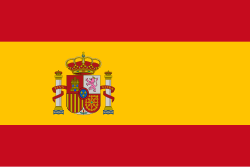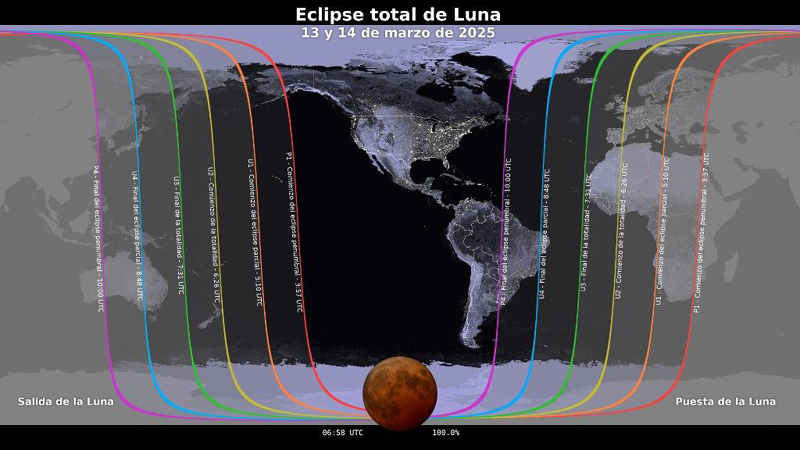The Moon will offer us an astronomical spectacle for five hours from tonight, as it enters a total eclipse this Thursday: our satellite will pass through the Earth‘s shadow and mark the end of winter in the Northern Hemisphere.
The first to be seen in three years, the total eclipse, unlike those provided by the Sun, will be visible throughout the planet and will begin about three hours before midnight and will last until the early morning of March 14.
It occurs when the Sun, Earth, and Moon align in such a way that the Moon passes within our planet’s shadow.
In total lunar eclipses, which always happen in the full moon phase, all our natural satellite passes within the umbra, which is how the darkest part of the shadow is called. When the Moon is within the umbra, it looks reddish, hence its name as “blood moons”.
It is as if all the sunrises and sunsets in the world are projected on the Moon, NASA described on its website. The amount of particles and dust present in the atmosphere during that time also influences, they add.
North Americans will be better able to see the phenomenon because of the optimal conditions for observing it in the United States, Canada, and Mexico, as well as in South American countries.
Despite not having a total solar eclipse in 2025, two total lunar eclipses will occur instead. The first this March and the next one on September 7-8, which will be visible from Europe, Russia, Asia, Australia, Africa and Antarctica.
With information from Prensa Latina/ Translated by Radio Angulo
- Cuba Adopts Winter Time on November 2nd - 1 de November de 2025
- Venezuela Sends Humanitarian Aid to Cuba and Jamaica - 1 de November de 2025
- Cuba clarifies alleged offer of aid from the U.S. - 1 de November de 2025

